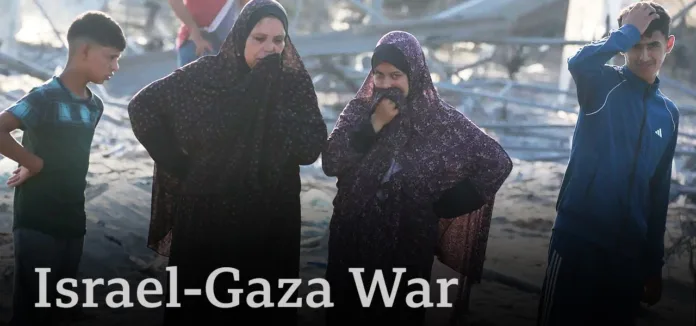An Israeli airstrike hits the tent encampment in al-Mawasi, Gaza, killing 19 people and wounding around 65, igniting controversy over the area’s status as a ‘safe zone’
On the night of September 10, 2024, Israeli airstrikes targeted a tent encampment in al-Mawasi, Khan Younis, within Gaza. This area, designated a “safe zone” by Israel, was struck by at least three missiles, resulting in the deaths of at least 19 people and injuries to around 65 others. Health officials report that many remain trapped under the rubble, and the attack has further exacerbated the dire humanitarian situation in Gaza.
The encampment in al-Mawasi, a region near Khan Younis and Deir el-Balah, has been severely impacted by ongoing conflict. This area, officially recognized as a humanitarian zone by Israel in December 2023, is densely populated, with more than 60 tents sheltering displaced individuals. The strikes ignited fires that consumed at least 20 tents, leaving behind a scene of devastation.
Al-Mawasi has become a focal point for displaced Palestinians, with approximately 1.9 million people across Gaza having been displaced at least once due to the conflict. The area, covering about 41 square kilometers (15.83 square miles), lacks critical infrastructure, essential services, and is overcrowded. Displaced families live in cramped conditions, with limited access to food, water, and healthcare. The UN Office for the Coordination of Humanitarian Affairs (OCHA) has reported severe overcrowding and health issues, including widespread skin conditions and inadequate sanitation.
Israel’s designation of al-Mawasi as a “safe zone” was aimed at providing refuge amid intense military operations. However, this area, initially considered a temporary sanctuary, has been criticized for its lack of resources and infrastructure. The World Health Organization (WHO) warned that cramming large numbers of displaced people into such a poorly equipped zone would heighten health risks and complicate humanitarian efforts.
Israel has justified the strike by claiming that senior Hamas figures were present in the area. According to Israeli statements, extensive intelligence and aerial surveillance indicated the presence of Hamas members among the displaced population. However, Hamas has condemned the strike as a “heinous massacre,” denying the presence of its members within civilian gatherings.
The impact of the airstrikes has been significant, with large craters visible at the strike site. Evidence suggests that the Israeli military used 2,000-pound MK-84 bombs, known for their devastating blast radius. The use of such heavy ordnance in a densely populated area raises questions about the effectiveness of the claimed precision and the humanitarian implications of the attack.
Analysis:
Political Perspective: The Israeli airstrikes on al-Mawasi have ignited intense debate about the use of designated “safe zones” in conflict areas. Politically, the attack highlights the complexities of Israel’s military strategy and the international community’s response to its actions in Gaza. By targeting a zone labelled as safe, Israel faces criticism for potentially disregarding its own designation and the humanitarian impact on civilians. This situation could influence international diplomatic relations and affect Israel’s standing on the global stage, especially regarding its adherence to international humanitarian laws.
Social Perspective: The conditions in al-Mawasi reflect the broader social crisis in Gaza, where displaced populations are increasingly concentrated in inadequate living conditions. The strike exacerbates the plight of those forced into overcrowded camps with limited resources. The international community and humanitarian organizations have criticized the conditions in these zones, highlighting the disconnect between the official designation of safety and the harsh reality on the ground. The attack has intensified global scrutiny of Israel’s humanitarian policies and its impact on civilians.
Economic Perspective: The economic repercussions of the airstrikes are profound. The destruction of makeshift shelters and the loss of life further strain Gaza’s already fragile economy. The ongoing conflict disrupts economic activities and exacerbates poverty, with increased damage to infrastructure leading to higher reconstruction costs. The international community may need to provide additional aid to address the economic fallout and support the rebuilding efforts in affected areas.
Racial and Gender Perspectives: The airstrikes and their aftermath underscore issues related to racial and gender disparities in conflict zones. Palestinian civilians, including women and children, bear the brunt of the violence, reflecting broader patterns of inequality and vulnerability in conflict settings. The humanitarian crisis disproportionately affects women, who face heightened risks due to inadequate medical care and safety concerns. The situation in al-Mawasi illustrates the intersection of gender and racial issues in the context of military conflicts and displacement.
Overall, the attack on al-Mawasi raises critical questions about the effectiveness and morality of using designated safe zones in conflict areas, the adequacy of humanitarian responses, and the broader implications for international relations and human rights.
